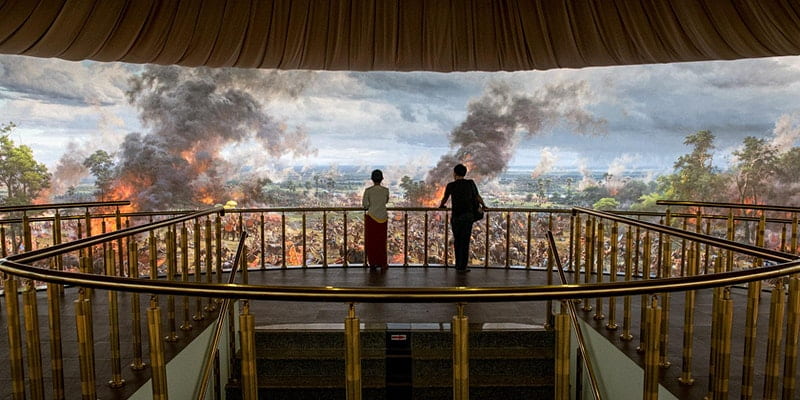Thursday, February 18, 2021
3:00 PM – 4:30 PM EST
Zoom Events

Relatively little known, and yet readily visible in the form of its conspicuous façade situated along Siem Reap’s present-day tourist trail, the Angkor Panorama Museum stands as a curious component of Angkor Archeological Park. Designed and built by the Mansudae Overseas Project, a branch of North Korea’s central art studio, the space opened in December 2015 only to shutter its doors less than four years later in November 2019. On at least one front, the Angkor venture veered from Mansudae Overseas Projects’ representative work, a corpus that has, to date, consisted largely of socialist monuments commissioned by or gifted to African nations. With the Angkor Panorama Museum, Mansudae engaged for the first time with the overtly religious subject matter, which gives shape to a singular condensation of socialist realism and visual conventions associated with Hinduism and Buddhism.
Co-sponsored by the GW Institute for Korean Studies, the Soh Jaipil Lecture Series, “State of Grace: The North Korean-built Angkor Panorama Museum in Light of DPRK-Cambodian Cultural Relations,” will feature Douglas Gabriel, 2020-21 Korea Foundation Postdoctoral Fellow at GW, and Immanuel Kim, Korea Foundation and Kim-Renaud Associate Professor of Korean Literature and Culture Studies at GW. Their discussion will contextualize the eccentricities of Mansudae’s Angkor project against the historical background of what amounted to an enduring friendship between Cambodia’s Prince Norodom Sihanouk (1922–2012) and North Korea’s Kim Il-sung (1912–1994). Exiled for prolonged periods throughout his life, Sihanouk spent substantial intervals at a palace that Kim had ordered built for him outside of Pyongyang. There, he produced music and poetry eulogizing North Korean–Khmer solidarity and directed several films in the Korean language that featured all-Korean casts. This array of cultural artifacts anticipated the narrative arc of Mansudae’s Angkor museum by suggesting an unlikely convergence between the respectively secular-communist and religious ideological foundations of the North Korean and Cambodian states — one rooted in a proven resiliency against imperialist aggressors.

